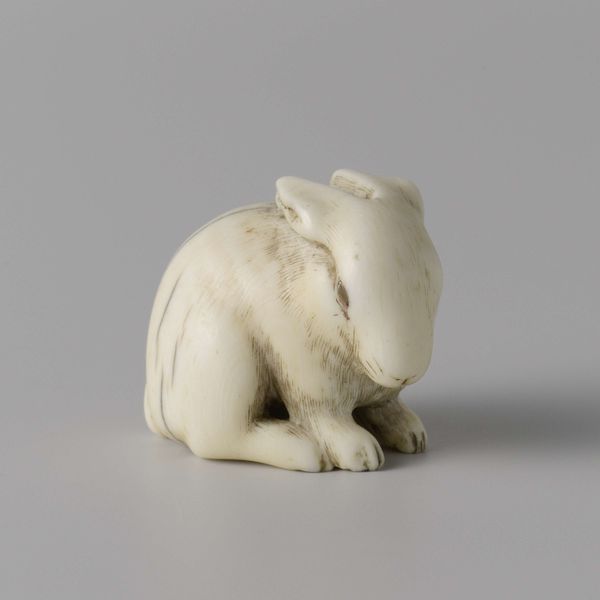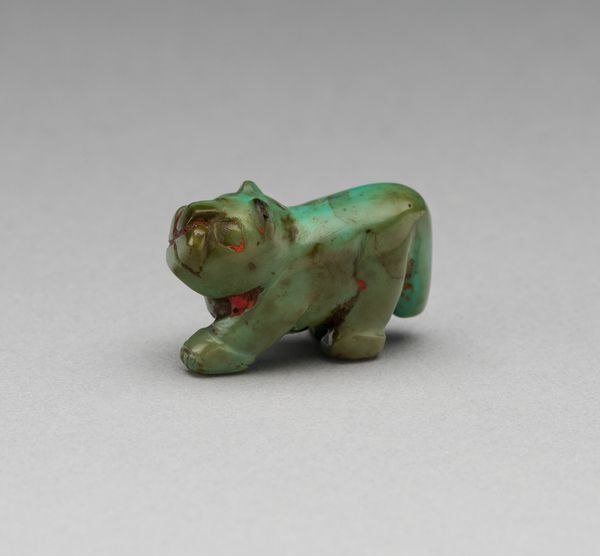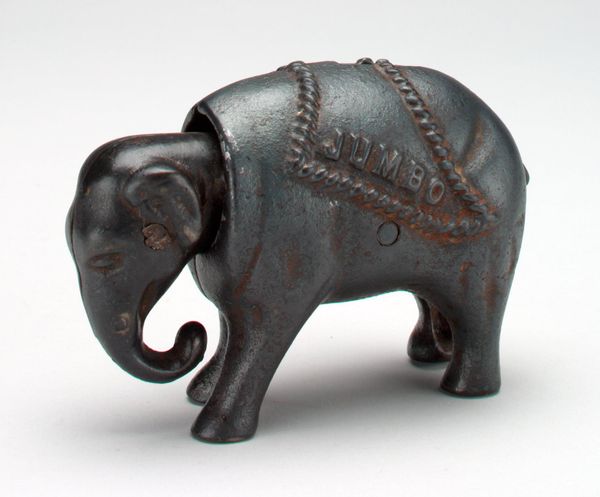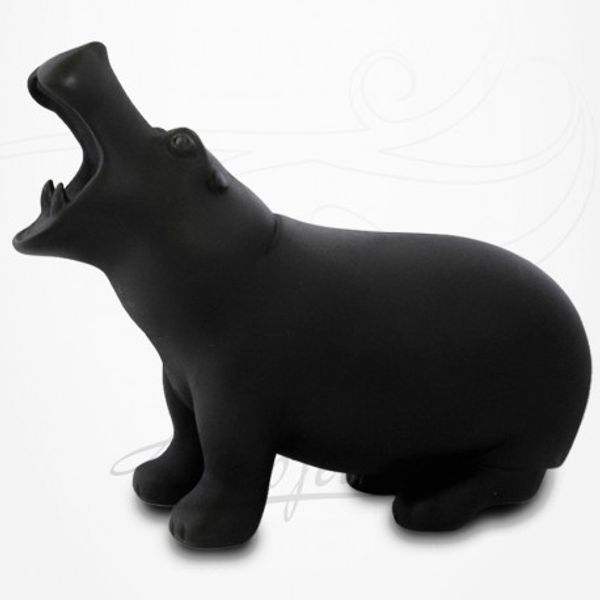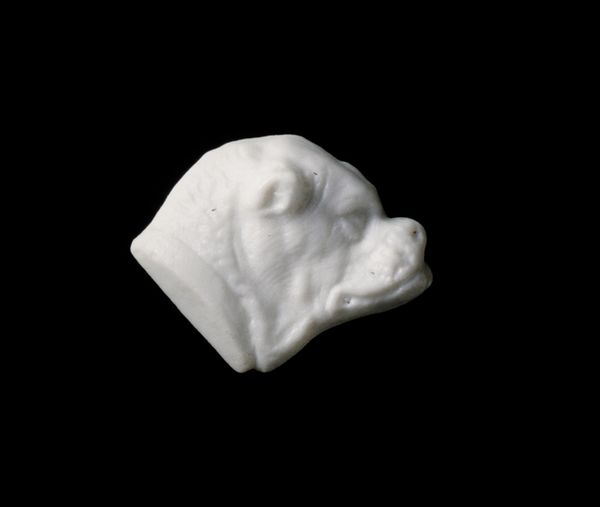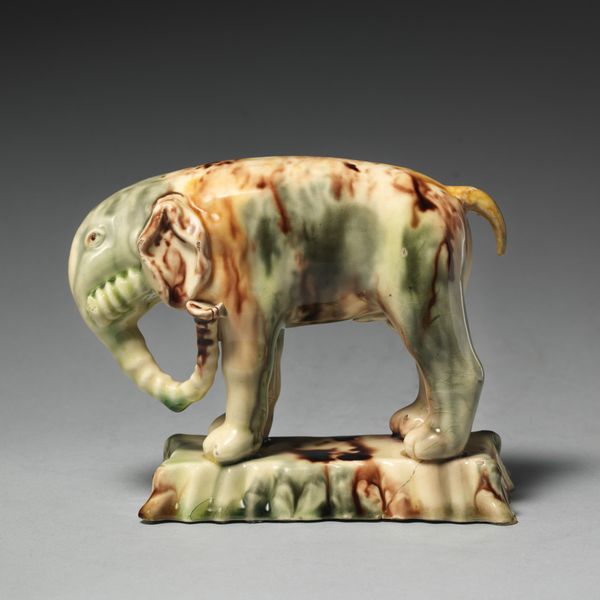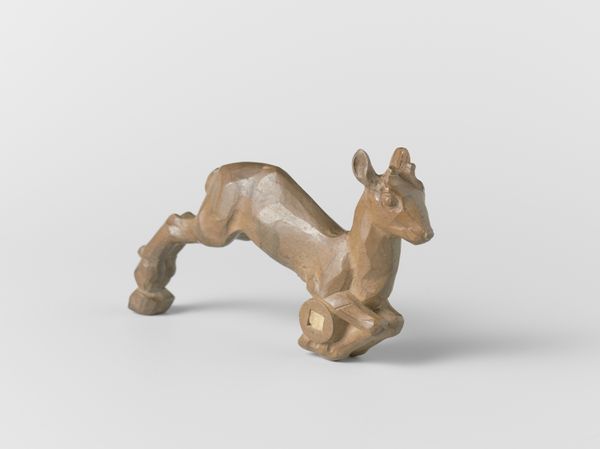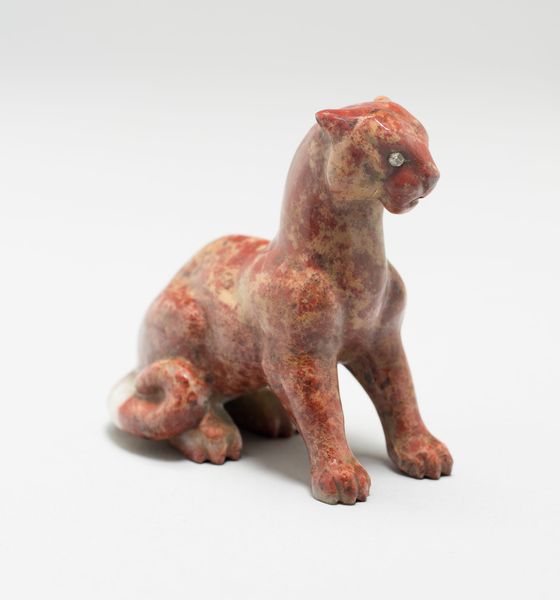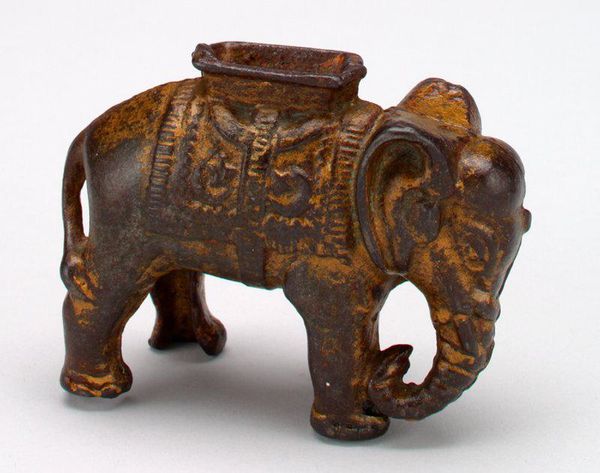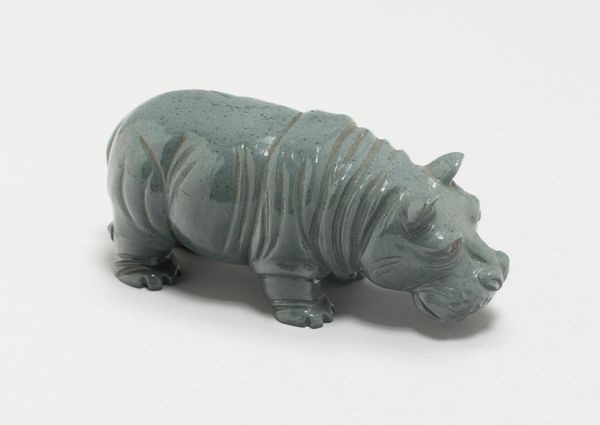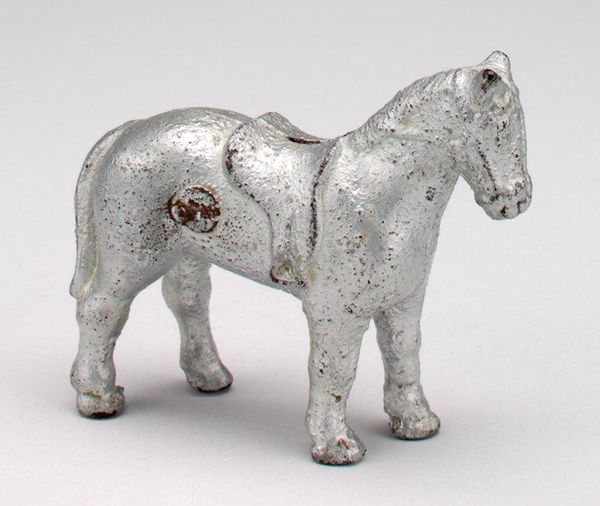
sculpture, ivory
#
animal
#
sculpture
#
figuration
#
sculpture
#
ivory
#
miniature
Dimensions: 13/16 x 1 1/8 in. (2.1 x 2.9 cm)
Copyright: Public Domain
Curator: My goodness, it's precious. Like a little dream taking shape in ivory. Did it actually adorn a sleeve? Imagine the wearer's secrets carried around with such a silent companion! Editor: Indeed, let's delve into this curious creation. What we're observing is a sleeve button, dating from 1873 to 1876. It was produced by Union Porcelain Works and is currently held at the Metropolitan Museum of Art. It appears to be rendered in ivory, though further research would be needed to determine that with certainty. Curator: Oh, an elephant, now I see. Initially, it was such a pure form I thought more about how the craftsman shaped ivory. But now it is clear. Did it come from one of the famed families or from just someone who likes elephants and a clean shirt? Editor: Union Porcelain Works was known for its decorative porcelain. Sleeve buttons would be considered part of that business rather than purely sartorial production. I’m struck by how a mundane object such as a sleeve button becomes a site where artistry, social class, and labor intersect. Curator: It really is a conversation starter, right? It feels playful. Like it knows more than it tells. If that was on my sleeve it would make every interaction magical. Editor: I am drawn to how these objects reflect Victorian society's burgeoning consumer culture, one where the availability of increasingly elaborate ornaments served as visible signifiers of social position and refined taste. And, speaking of playfulness, this also offers a great lens to examine how animal representations took hold of domestic life as markers of nature's dominion. Curator: Oh yes! The domestic taming. Makes this button the crown jewel. I am rethinking this "little nothing," as it can become a potent artifact. Editor: Agreed. From what appeared simple at first, it's remarkable how many complex material, social, and even psychological avenues this miniature piece invites us to consider. It surely underscores the wealth of information often embedded in quotidian, overlooked objects.
Comments
No comments
Be the first to comment and join the conversation on the ultimate creative platform.

